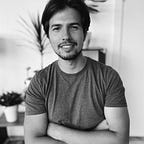How Agnès Varda Sparked a French Film Revolution
A case study of Agnès Varda’s first feature film ‘La Pointe Courte’ (1954) and its impact on French cinema.
The French Nouvelle Vague (New Wave) is one of the most critical art movements in cinematic history. The movement brought a means of change; a rejection of traditional filmmaking with an emphasis on style, existentialism, and the essence of the individual auteur. As within many aspects of cinema history, this movement was dominated by male figureheads. When discussing the origin of the French New Wave, two men are often brought up in contention. Influential directors and critics of Cahiers du Cinema, Jean-Luc Godard and Francois Truffaut were self-righteous pioneers that set out to change the face of French cinema. In film school, this notion is often emphasised as the first New Wave films you are often subjected to are The 400 Blows (Truffaut:1959) and Breathless (Godard:1960).
What they don’t teach you in film school is that these two titans of the New Wave were heavily influenced by a low-budget and acutely released film by the only woman within the Nouvelle Vague; Agnès Varda. Her first feature film La Pointe Courte (1954) precedes both The 400 Blows and Breathless. The film features many of the stylistic aspects that would mold the movement in its decades of production. This article analyses how the pivotal stylistic choices made in La Pointe Courte explain why Agnès Varda is the true originator of one of the most influential movements in cinematic history.
Neo-Realism
Unlike the Cahiers writers, Varda claims that she had not seen many films at all before embarking on her career as a filmmaker. Instead, her inspiration resonated from her work as a photographer, her studies of philosophy and art, and the stories within everyday life. The final point of inspiration is truly evident in La Pointe Courte. Although she claimed to have minimal knowledge of film, Varda’s cinematography is homogenous to the cinema-verite style of the Italian Neo-Realism movement of the 1940/50s: a preceding cinematic movement that would heavily influence the French New Wave. This can be seen in the on-location shooting of the small town in which the film shares its title, and the more intimate mid-shots and close-ups of the people who resided there.
New Wave directors would often mix their cast with actors and non-actors who were essentially “every-day” regular people. Varda provided an excellent execution of this method to influence her peers as she documented the townsfolk in their everyday lives. She uses intimate mid-shots of family meals and close-ups of the fisherman handling and sorting their catches. The narrative of La Pointe Courte can be split into two story arcs: the social story of the townsfolk, and the private story of the failing marriage performed by actors Silvia Monfort and Philippe Noiret.
Existentialism
The narrative of the failing marriage beholds a typical Nouvelle Vague existential crisis… Is love a true emotion or are we simply creatures of habit? This philosophy flourishes through Varda’s cinematography, editing, and direction of her leading actors. New Wave directors subscribed to a style over substance mentality when filming. In essence, they would often show rather than tell. During a scene that portrays the married couple Elle (Silvia Monfort) and Lui (Philippe Noiret) reflecting on their marriage, the separation is made more evident through the camera rather than the dialogue.
Instead of a haven for each other,
it’s a constant revolt
Style Over Substance
The dialogue begins with Varda’s famous close-up of the faces of each character merging into one. As the dialogue develops, the couple goes from being as physically close as possible to more and more distant each time a sentence is expressed. Varda utilises the idiosyncratic New Wave editing technique, the jump cut, to abruptly separate her characters into wider angled shots that utilise space as a sense of solitude. When the couple is shot together, they are poetically separated with natural objects within the on-location set of the fishing town. This is masterfully executed in a low-angle mid-shot of the couple is divided by a tall wooden beam. There is also a fantastic long-shot that literally places the couple’s marriage “on the rocks”.
Inspirational Individualism
Agnès Varda set the individualistic standard of the auteur in the production of La Pointe Courte. With no professional training, Varda oversaw the production with authorial control as she wrote the script, shot on the location of her choosing, and edited the film in its “choppy” fashion on a mere budget of $14,000. At first, the film was not widely received past the viewings of her artistic peers, but thanks to historians of the movement, Varda now obtains the title of “the Mother/Grandmother of the New Wave”.
That matriarchal title still does not give the director enough justice. She was a true pioneer, an artist, and a word that is often used today… an influencer. Varda’s influence outstretched more than just the cinema of her home country. Post La Pointe Courte, Varda’s illustrious career spanned over an astonishing 65 year period up until the point of her tragic death in 2019. Her quintessential filmmaking not only made a stylistic impact on New Wave and Documentary films, but it also set the precedent for like-minded free-thinking creative women to make their mark in an industry dominated by men.
